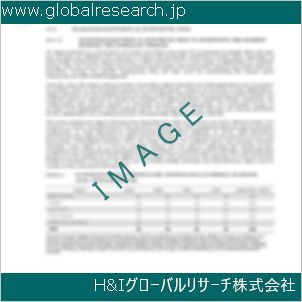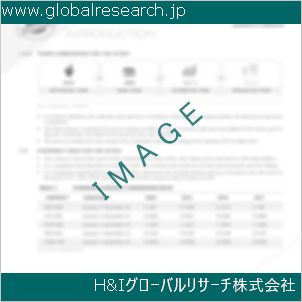Table of Contents
1 Industry Overview of Boric acid
1.1 Definition and Specifications of Boric acid
1.1.1 Definition of Boric acid
1.1.2 Specifications of Boric acid
1.2 Classification of Boric acid
1.3 Applications of Boric acid
1.3.1 Nuclear Application
1.3.2 Non-Nuclear Application
1.4 Industry Chain Structure of Boric acid
1.5 Industry Overview and Major Regions Status of Boric acid
1.5.1 Industry Overview of Boric acid
1.5.2 Global Major Regions Status of Boric acid
1.6 Industry Policy Analysis of Boric acid
1.7 Industry News Analysis of Boric acid
2 Manufacturing Cost Structure Analysis of Boric acid
2.1 Raw Material Suppliers and Price Analysis of Boric acid
2.2 Equipment Suppliers and Price Analysis of Boric acid
2.3 Labor Cost Analysis of Boric acid
2.4 Other Costs Analysis of Boric acid
2.5 Manufacturing Cost Structure Analysis of Boric acid
2.6 Manufacturing Process Analysis of Boric acid
3 Technical Data and Manufacturing Plants Analysis of Boric acid
3.1 Capacity and Commercial Production Date of Global Boric acid Major Manufacturers in 2023
3.2 Manufacturing Plants Distribution of Global Boric acid Major Manufacturers in 2023
3.3 R&D Status and Technology Source of Global Boric acid Major Manufacturers in 2023
3.4 Raw Materials Sources Analysis of Global Boric acid Major Manufacturers in 2023
4 Capacity, Production and Revenue Analysis of Boric acid by Regions, Types and Manufacturers
4.1 Global Capacity, Production and Revenue of Boric acid by Regions 2019-2024
4.2 Global and Major Regions Capacity, Production, Revenue and Growth Rate of Boric acid 2019-2024
4.3 Global Capacity, Production and Revenue of Boric acid by Types 2019-2024
4.4 Global Capacity, Production and Revenue of Boric acid by Manufacturers 2019-2024
5 Price, Cost, Gross and Gross Margin Analysis of Boric acid by Regions, Types and Manufacturers
5.1 Price, Cost, Gross and Gross Margin Analysis of Boric acid by Regions 2019-2024
5.2 Price, Cost, Gross and Gross Margin Analysis of Boric acid by Types 2019-2024
5.3 Price, Cost, Gross and Gross Margin Analysis of Boric acid by Manufacturers 2019-2024
6 Consumption Volume, Consumption Value and Sale Price Analysis of Boric acid by Regions, Types and Applications
6.1 Global Consumption Volume and Consumption Value of Boric acid by Regions 2019-2024
6.2 Global and Major Regions Consumption Volume, Consumption Value and Growth Rate of Boric acid 2019-2024
6.3 Global Consumption Volume and Consumption Value of Boric acid by Types 2019-2024
6.4 Global Consumption Volume and Consumption Value of Boric acid by Applications 2019-2024
6.5 Sale Price of Boric acid by Regions 2019-2024
6.6 Sale Price of Boric acid by Types 2019-2024
6.7 Sale Price of Boric acid by Applications 2019-2024
6.8 Market Share Analysis of Boric acid by Different Sale Price Levels
7 Supply, Import, Export and Consumption Analysis of Boric acid
7.1 Supply, Consumption and Gap of Boric acid 2019-2024
7.2 Global Capacity, Production, Price, Cost, Revenue, Supply, Import, Export and Consumption of Boric acid 2019-2024
7.3 USA Capacity, Production, Price, Cost, Revenue, Supply, Import, Export and Consumption of Boric acid 2019-2024
7.4 EU Capacity, Production, Price, Cost, Revenue, Supply, Import, Export and Consumption of Boric acid 2019-2024
7.5 China Capacity, Production, Price, Cost, Revenue, Supply, Import, Export and Consumption of Boric acid 2019-2024
7.6 Japan Capacity, Production, Price, Cost, Revenue, Supply, Import, Export and Consumption of Boric acid 2019-2024
8 Major Manufacturers Analysis of Boric acid
8.1 Manufacturer One
8.1.1 Company Profile
8.1.2 Product Picture and Specifications
8.1.2.1 Type I
8.1.2.2 Type II
8.1.2.3 Type III
8.1.3 Capacity, Production, Price, Cost, Gross and Revenue
8.1.4 Contact Information
8.2 Manufacturer Two
8.2.1 Company Profile
8.2.2 Product Picture and Specifications
8.2.2.1 Type I
8.2.2.2 Type II
8.2.2.3 Type III
8.2.3 Capacity, Production, Price, Cost, Gross and Revenue
8.2.4 Contact Information
8.3 Manufacturer Three
8.3.1 Company Profile
8.3.2 Product Picture and Specifications
8.3.2.1 Type I
8.3.2.2 Type II
8.3.2.3 Type III
8.3.3 Capacity, Production, Price, Cost, Gross and Revenue
8.3.4 Contact Information
8.4 Manufacturer Four
8.4.1 Company Profile
8.4.2 Product Picture and Specifications
8.4.2.1 Type I
8.4.2.2 Type II
8.4.2.3 Type III
8.4.3 Capacity, Production, Price, Cost, Gross and Revenue
8.4.4 Contact Information
8.5 Manufacturer Five
8.5.1 Company Profile
8.5.2 Product Picture and Specifications
8.5.2.1 Type I
8.5.2.2 Type II
8.5.2.3 Type III
8.5.3 Capacity, Production, Price, Cost, Gross and Revenue
8.5.4 Contact Information
…
9 Marketing Trader or Distributor Analysis of Boric acid
9.1 Marketing Channels Status of Boric acid
9.2 Traders or Distributors with Contact Information of Boric acid by Regions
9.3 Ex-work Price, Channel Price and End Buyer Price Analysis of Boric acid
9.4 Regional Import, Export and Trade Analysis of Boric acid
10 Industry Chain Analysis of Boric acid
10.1 Upstream Major Raw Materials Suppliers Analysis of Boric acid
10.1.1 Major Raw Materials Suppliers with Contact Information Analysis of Boric acid
10.1.2 Major Raw Materials Suppliers with Supply Volume Analysis of Boric acid by Regions
10.2 Upstream Major Equipment Suppliers Analysis of Boric acid
10.2.1 Major Equipment Suppliers with Contact Information Analysis of Boric acid
10.2.2 Major Equipment Suppliers with Product Pictures Analysis of Boric acid by Regions
10.3 Downstream Major Consumers Analysis of Boric acid
10.3.1 Major Consumers with Contact Information Analysis of Boric acid
10.3.2 Major Consumers with Consumption Volume Analysis of Boric acid by Regions
10.4 Supply Chain Relationship Analysis of Boric acid
11 Development Trend of Analysis of Boric acid
11.1 Capacity, Production and Revenue Forecast of Boric acid by Regions and Types
11.1.1 Global Capacity, Production and Revenue of Boric acid by Regions 2024-2029
11.1.2 Global and Major Regions Capacity, Production, Revenue and Growth Rate of Boric acid 2024-2029
11.1.3 Global Capacity, Production and Revenue of Boric acid by Types 2024-2029
11.2 Consumption Volume and Consumption Value Forecast of Boric acid by Regions, Types and Applications
11.2.1 Global Consumption Volume and Consumption Value of Boric acid by Regions 2024-2029
11.2.2 Global and Major Regions Consumption Volume, Consumption Value and Growth Rate of Boric acid 2024-2029
11.2.3 Global Consumption Volume and Consumption Value of Boric acid by Types 2024-2029
11.2.4 Global Consumption Volume and Consumption Value of Boric acid by Applications 2024-2029
11.3 Supply, Import, Export and Consumption Forecast of Boric acid
11.3.1 Supply, Consumption and Gap of Boric acid 2024-2029
11.3.2 Global Capacity, Production, Price, Cost, Revenue, Supply, Import, Export and Consumption of Boric acid 2024-2029
11.3.3 USA Capacity, Production, Price, Cost, Revenue, Supply, Import, Export and Consumption of Boric acid 2024-2029
11.3.4 EU Capacity, Production, Price, Cost, Revenue, Supply, Import, Export and Consumption of Boric acid 2024-2029
11.3.5 China Capacity, Production, Price, Cost, Revenue, Supply, Import, Export and Consumption of Boric acid 2024-2029
11.3.6 Japan Capacity, Production, Price, Cost, Revenue, Supply, Import, Export and Consumption of Boric acid 2024-2029
12 New Project Investment Feasibility Analysis of Boric acid
12.1 New Project SWOT Analysis of Boric acid
12.2 New Project Investment Feasibility Analysis of Boric acid
13 Conclusion of the Global Boric acid (CAS 11113-50-1) Industry 2024 Market Research Report
| ※参考情報 ホウ酸(Boric acid)は、化学式 H₃BO₃ で表される無機酸であり、ホウ素を含む化合物の一種です。ホウ酸は、環状の分子構造を持ち、通常は無色の結晶または白色の結晶性粉末として存在します。常温では水に溶解し、弱い酸性の性質を示します。ホウ酸はその特性や用途からさまざまな分野で利用されており、以下にその概念について詳述いたします。 ホウ酸の特徴として、まずその化学的性質が挙げられます。ホウ酸は、pHが中性から弱酸性の範囲にある際に、少量の水を加えただけでも酸性を示します。また、ホウ酸は非常に安定した化合物であり、高温にも強い特性を持っています。さらに、ホウ酸は低毒性であるため、他の酸と比べて安全性が高いとされています。このため、さまざまな用途に対応できる柔軟さがあります。 ホウ酸にはいくつかの種類があります。一般的に、ホウ酸そのものを指すことが多いですが、ホウ酸 Na、ホウ砂(ナトリウム塩)、ホウ酸カルシウムなども関連物質として存在します。ホウ酸は、特に工業的には、ホウ砂から生成されることが一般的です。これらのホウ素化合物は、それぞれ異なる特性を持ち、特定の用途に応じて使われます。 ホウ酸の主な用途には、以下のようなものがあります。まず、農業における利用があります。ホウ酸は植物にとって必須微量元素であり、特に成長や発育に重要な役割を果たします。ホウ素が不足すると植物の成長が阻害されるため、農業用の肥料に添加されることが多いです。 また、ホウ酸は抗菌剤としても知られています。特に、化粧品や医療分野では抗菌作用を持つため、消毒剤や眼科用点眼薬に使用されます。抗炎症効果もあり、これにより傷の治癒を促進する助けとなります。さらに、食品業界においても保存料として利用されており、食品の品質保持に寄与しています。 工業用途においては、ホウ酸はガラス産業で非常に重要な役割を果たします。ホウ酸を添加することでガラス製品の耐熱性や光学特性が向上し、より高品質な製品が製造可能となります。また、ホウ酸は繊維産業でも使用され、化学繊維や吸水性ポリマーの製造に重要な役割を果たします。このように、ホウ酸は製造プロセスにおいて多用途であり、さまざまな製品の特性を向上させるために活用されています。 さらに、ホウ酸は電子機器の製造にも使われています。半導体産業において、ホウ素はドーパントとして用いられることがあり、これにより半導体の導電性が調整されます。このように、ホウ酸は電子機器の性能向上にも寄与しています。その他にも、ホウ酸はセラミック産業や塗料産業でも利用されることがあります。 関連技術に関しても、ホウ酸はその性質を活かした技術革新につながっています。たとえば、センサー技術においては、ホウ酸を用いた新しい材料の開発が進められており、環境モニタリングや医療診断において重要な役割を果たす可能性があります。また、ホウ素化合物の研究は、化学反応における触媒作用の理解を深めるためにも重要であり、基礎科学の分野でも注目されています。 まとめとして、ホウ酸は多様な特徴や用途を持つ重要な化合物です。農業から医療、工業までさまざまな分野で利用されるだけでなく、関連技術の発展に寄与する可能性を秘めています。ホウ酸の研究は今後も続くと考えられ、新しい応用が期待されているため、その動向に注目することが重要です。 |
❖ 免責事項 ❖
http://www.globalresearch.jp/disclaimer












